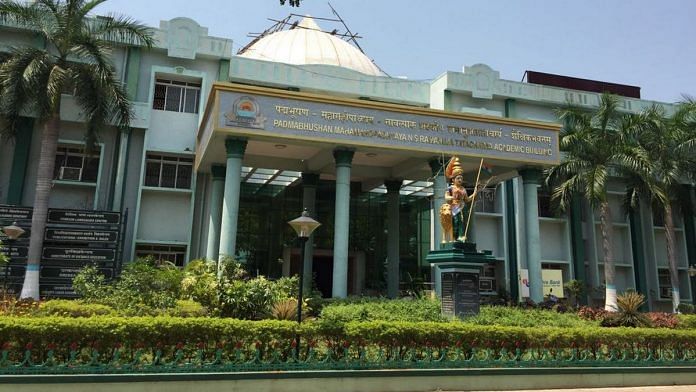New Delhi: The Narendra Modi government has prepared guidelines to promote Sanskrit education and streamline the functioning of universities and colleges that teach the ancient language, ThePrint has learnt.
The Ministry of Human Resource Development (HRD) is set to provide National Assessment and Accreditation Council (NAAC) accreditation to Sanskrit universities and colleges, on the lines of other higher education institutions. This accreditation gives scores to institutes on the basis of their research, curriculum, faculty, infrastructure and other criteria, and gets them recognition at national and international levels.
There are 18 Sanskrit Universities and more than 100 Sanskrit colleges in the country, and so far, none of them had NAAC accreditation, but the guidelines released by the government in October last year will enable them to get it.
NAAC accreditation will help these institutions increase their research output and enable their participation in national and international university rankings like the National Institutional Ranking Framework (NIRF) and the QS Rankings.
Also read: RSS affiliate not happy with Modi govt’s efforts to promote Sanskrit, charts own course
What are the guidelines?
The NAAC guidelines for Sanskrit institutions were prepared on the recommendations of a committee headed by former chief election commissioner N. Gopalaswami, who is also the chancellor of the Rashtriya Sanskrit Vidyapeetha in Tirupati.
The guidelines state that the institutions will be ranked on seven broad points — curricular aspects; teaching-learning and evaluation; research, innovations and extension; infrastructure and learning resources; student support and progression; governance, leadership and management; and institutional values.
For curricular aspects, institutions are expected to keep the curriculum up-to-date and introduce appropriate changes.
For teaching-learning and evaluation, the institutions are expected to adopt different strategies for attracting students. The guidelines state that the institutions should initiate the process of online admissions and make sure that the “student profile has representation of student community from different geographical area and socio-economic, cultural and educational backgrounds”. The institutions are also expected to make efforts to get students from other “modern” disciplines and prepare bridge courses for such students.
The institutions are “especially expected to cultivate the guru–shishya parampara (ancient India’s teacher-student tradition) and make the traditional methods of teaching and learning suited to the present context”.
For conducting research, the guidelines say that every institution should have a Centre of Research and study, for dissemination of Sastric learning. “A process for a proper review of the research works undertaken under the aegis of the university must be developed and encouragement must be given to both critical and creative writings,” the guidelines state.
Different guidelines needed for Sanskrit institutions
According to professor Shrinivasa Varakhedi, vice-chancellor of the Kavikulaguru Kalidas Sanskrit University in Ramtek, Maharashtra, and member of the committee that worked on the NAAC manual, it was important that Sanskrit universities have different guidelines for accreditation, because the way students are taught in these institutions is different from others.
“With the new accreditation process, Sanskrit universities will also be open for interdisciplinary courses and research. There are some courses in these universities that did not have recognition at the international level; NAAC accreditation will facilitate that,” Varakhedi told ThePrint.
As a result, courses like B.Sc. and M.Sc. in Yoga Science will get international recognition, which they didn’t have before.
Also read: New Sanskrit map of India features Nagalandam, Mansarovar-jheelah and even Pakistanam



